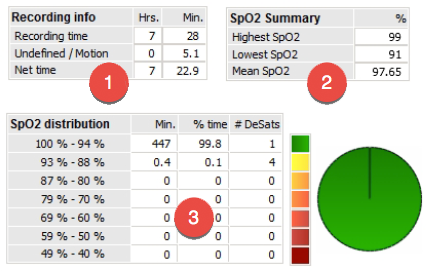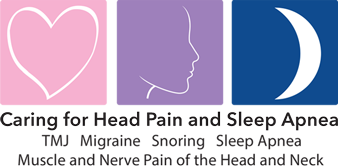
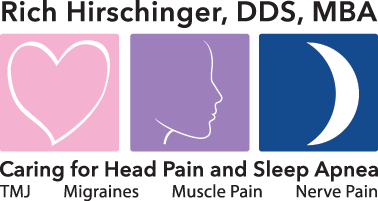
Diplomate American Board of Orofacial Pain
9615 Brighton Way, Suite 323
Beverly Hills, CA 90210
888.981.8981
Understanding a Pulse Oximeter Report
An overnight pulse oximeter test is a good initial screening tool to test for signs of sleep apnea. A pulse oximeter, put into simple terms, measures the amount of oxygen in your blood. The blood carries oxygen to your brain, and if the percentage of oxygen in the blood is always above 94% during sleep, then your brain is getting the oxygen during sleep that it needs, and you will likely wake refreshed. If the brain does not get consistent oxygen during sleep, then you might have signs of sleep apnea, which are morning headache, excessive daytime tiredness, insomnia, snoring, gasping for air during sleep, dry mouth, etc.
There are several items to look at when viewing the pulse oximeter report. The easiest to understand is:
- How long the unit recorded for during the night
- SpO2 Summary, which is an estimate of the amount of oxygen in the blood, and
- SpO2 Distribution
The images below are examples of three different patients. There is more information on the pulse oximeter report than just the information shown below but these highlight information obtained from the report. Dr. Hirschinger will discuss your full report with you at his office in Beverly Hills.
No Sleep Apnea Likely
This patient slept for 7.5 hours, the lowest oxygen saturation recorded was 91%, and the mean was over 97%. When the percentage of oxygen saturation falls below 94%, that is called a desaturation. If the total number of desaturations divided by the total time is 5 or more desaturations per hour, then that is considered mild sleep apnea. If that number is between 15 and 30, then that is considered moderate sleep apnea, and if that number is above 30, then it is considered severe sleep apnea.
The patient had a total of 5 desaturations, and they slept 7.5 hours so the desaturation index is below 1 per hour, which is not a sign of sleep apnea. The pie chart is close to 100% green, which means the brain is getting consistent oxygen during sleep.
Mild Sleep Apnea
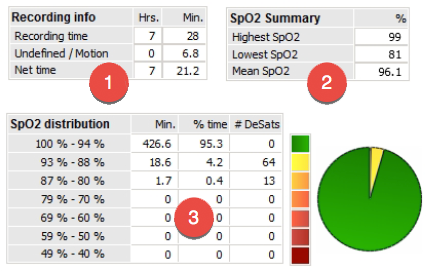
This patient slept for 7.5 hours, the lowest oxygen saturation recorded was 81%, and the mean was over 96%.
The patient had a total of 77 desaturations, and they slept 7.5 hours so the desaturation index is about 10 per hour, which is a sign of mild sleep apnea. The pie chart is mostly green but there is a large enough slice of yellow to discuss further testing.
Moderate Sleep Apnea
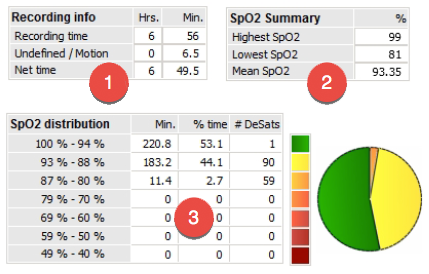
This patient slept for 7 hours, the lowest oxygen saturation recorded was 81%, and the mean was under 94%.
The patient had a total of 150 desaturations, and they slept 7 hours so the desaturation index is about 21 per hour, which is a sign of moderate sleep apnea. The pie chart is just over half green so further testing is absolutely necessary in order to make a diagnosis of obstructive sleep apnea.
Severe Sleep Apnea
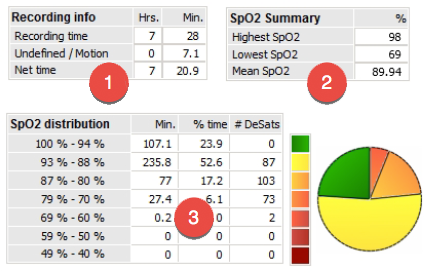 This patient slept for 7.5 hours, the lowest oxygen saturation
recorded was 69%, and the mean was under 90%.
This patient slept for 7.5 hours, the lowest oxygen saturation
recorded was 69%, and the mean was under 90%.
The patient had a total of 265 desaturations, and they slept 7.5 hours so the desaturation index is about 35 per hour, which is a sign of severe sleep apnea. The pie chart is less than one quarter green so further testing is absolutely necessary in order to make a diagnosis of obstructive sleep apnea.







